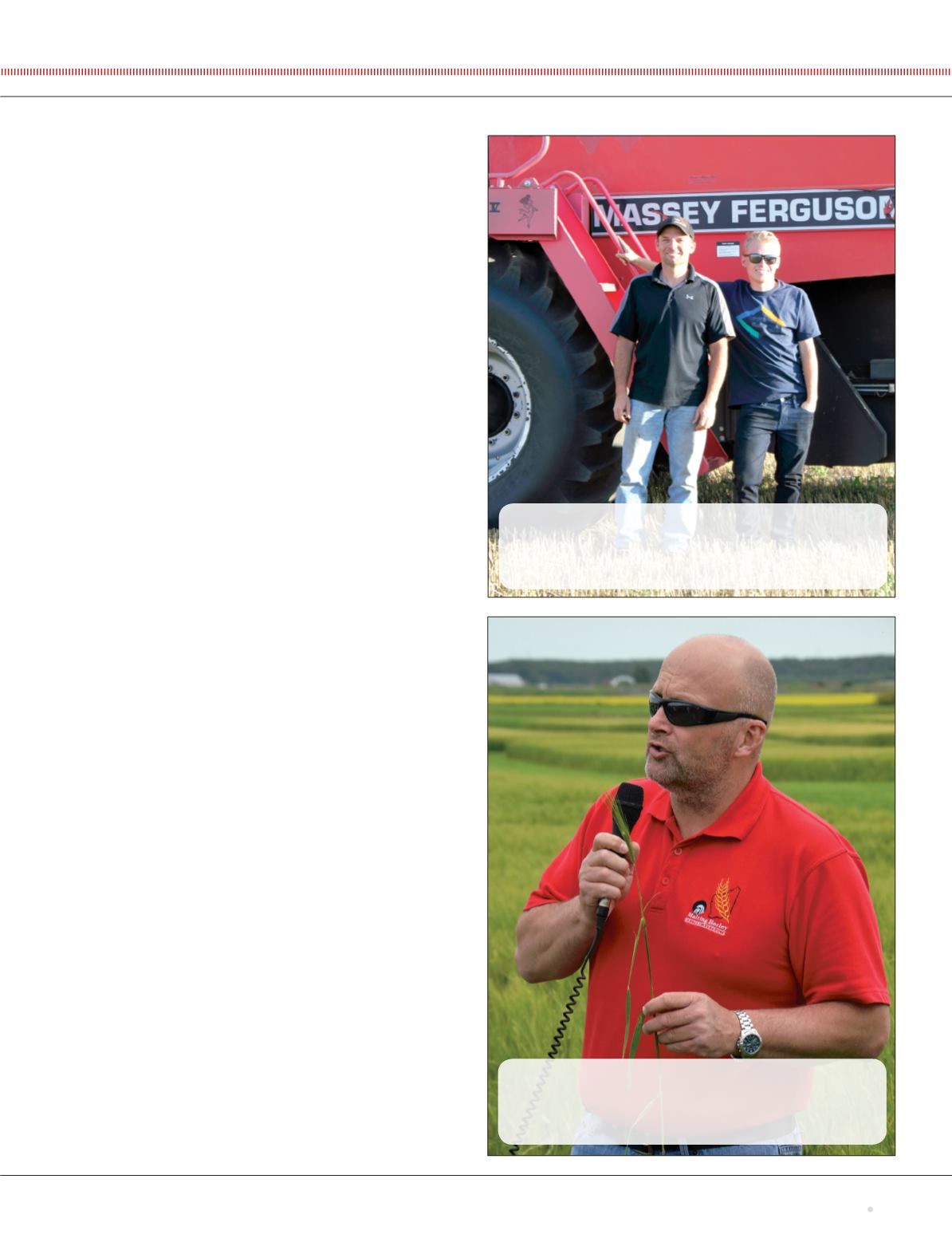

The Food Issue
2016
grainswest.com37
on the back, but because many in farming feel that a lack of
understanding of how farms operate is eroding the public’s
trust in agriculture.
John Kowalchuk grows wheat, barley, peas, soybeans and
canola at his farm near Trochu, AB. He’s a one-man show and
often puts in 18-hour days during harvest, stopping only for a
short night of sleep or an afternoon catnap, to make sure the
crop ends up in the bin.
Kowalchuk and his wife are raising three kids. The oldest, a
son, is in university, and his two daughters are in high school.
Food and nutrition are hot topics in his household. According
to Kowalchuk, something consumers seem to forget is that
farmers are also consumers.
“I feed my family the same food I grow on my farm,” he said.
He views his job as the first step in Canada’s food system and he
takes great pride in producing a high-quality crop.
When it comes to controversial topics, such as GMOs or
pesticide use, Kowalchuk said he wants consumers to better
grasp the level of research and regulation that governs what
farmers can access. There’s no hesitation in his house to use
canola oil made fromGM canola varieties, or to buy bread from
conventionally produced wheat, because Kowalchuk knows
they are safe products.
“I want consumers to understand that there are labels that
explain how a product, such as a pesticide, may be safely
used. I follow those labels to the letter because I’m growing
someone’s food. I’m growing my family’s food. That’s really
important to me,” Kowalchuk said.
Kelly Turkington is a plant pathologist with Agriculture and
Agri-Food Canada. In layman’s terms, he’s an expert on the
diseases that impact Canadian crops. Turkington said that while
farmers are frustrated at times by being misunderstood or in
the minority, agriculture researchers are often in the same boat.
And that’s a concern because researchers play a significant role
in serving both the consumer and the farmer.
“How many people know a real scientist? What does a
scientist look like? Most would probably say they wear lab coats
and work in a laboratory. But for agriculture research scientists,
farm fields are our labs,” he said. When it comes to agricultural
research, the scientists are at the mercy of Mother Nature 24
hours a day.
Turkington said he wants consumers to understand that
farmers are up against some serious challenges when they put
a crop in the ground. Even ignoring the financial risk and the
weather, there are still weeds, diseases and insects to contend
with. “A farmer can be following the latest recommendations—
diverse crop rotations, ideal soil fertility and correct plant
densities—and still end up with significant crop losses from a
disease that blows in from the U.S.,” he said.
Research scientists like Turkington are constantly working
to solve disease and insect problems. What’s sometimes
frustrating for him is that he sees the positive progress farmers
have made on several sustainability fronts—such as reduced or
FATHER AND SON:
John Kowalchuk (left) and his son Jayden are
confident in the safety of conventional foods, including those made
with GM crops, because they know how much careful regulation
goes into their production. Photo: Courtesy of John Kowalchuk.
SUSTAINABLE PROGRESS:
Kelly Turkington, a plant pathologist
with Agriculture and Agri-Food Canada, has seen the progress
farmers have made on sustainability, but doesn’t think consumers
have fully appreciated this positive shift. Photo: Tyler Difley.









